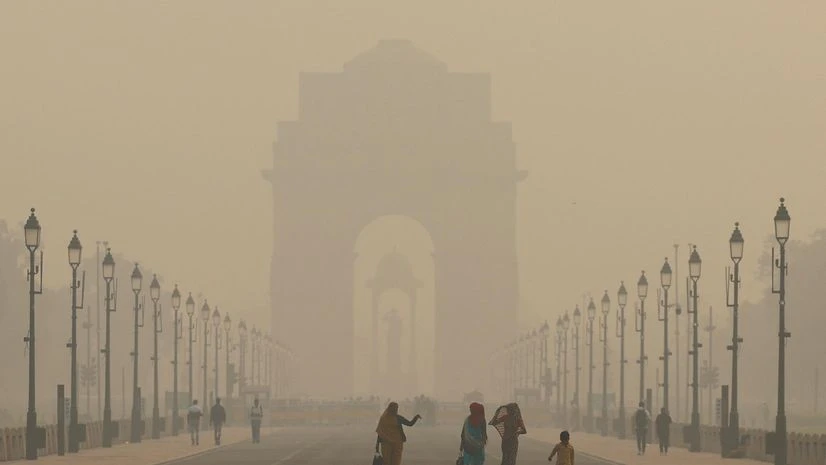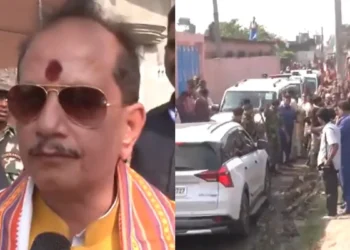Over 17,000 people died in Delhi last year from pollution-related causes, despite years of clean-air plans and government drives to curb emissions from vehicles and industries.
BY PC Bureau
New Delhi | November 4, 2025: One in every seven deaths in Delhi last year was caused by air pollution, a new global health study has found — confirming what residents have long suspected: the capital’s air is slowly, silently killing its people.
The analysis, based on the Global Burden of Disease (GBD) data from the Institute for Health Metrics and Evaluation (IHME), estimates that over 17,000 deaths in 2023 were linked to prolonged exposure to toxic air. In percentage terms, that’s almost 15% of all deaths in the city — making air pollution Delhi’s single biggest health threat.
Yet, despite such alarming numbers, the Union Environment Ministry continues to insist there is “no conclusive evidence” linking pollution directly to deaths, calling it one of several contributing factors.
READ: Manipur: Kuki-Zo Council, COTU Silent on UKNA Killings
A Public Health Crisis, Not Just an Environmental Problem
Experts say the findings leave little room for doubt. “Air pollution must now be treated as a public health emergency — not just an environmental concern,” said Dr Manoj Kumar from the Centre for Research on Energy and Clean Air (CREA), which analysed the data.
He pointed out that India already has more than 250 scientific studies showing how air pollution contributes to diseases ranging from lung ailments to strokes and heart failure.
“When we breathe in dirty air, microscopic particles enter the lungs and seep into the bloodstream,” Dr Kumar explained. “Over time, they clog blood vessels and deprive vital organs of oxygen. That’s why we’re seeing rising cases of heart attacks, strokes, and chronic respiratory diseases.”
READ: Manipur: Kuki-Zo Groups Call Killings of Four Tribal Youth ‘Cold-Blooded Murder’
Numbers Rising Despite Action Plans
The data shows a troubling trend: pollution-linked deaths rose from 15,786 in 2018 to 17,188 in 2023, even as Delhi launched new clean-air plans, curbs on construction, and stricter vehicular norms.
Following air pollution, the next major causes of death in 2023 were high blood pressure (12.5%), diabetes (9%), and high cholesterol (6%).
But experts note that particulate pollution alone continues to kill more Delhiites than hypertension or diabetes.
“Despite countless ‘action plans’ and task forces, the air remains toxic,” said Dr Kumar. “We are fighting symptoms, not causes.”
Not Just a Winter Problem
Delhi’s grey, choking smog every November is now a familiar image. But scientists warn that harmful exposure continues all year round.
“People think pollution vanishes after winter,” said Dr Kumar. “But PM2.5 levels remain dangerously high even in summer — we just don’t see it as smog because wind speeds are higher.”
According to CREA’s October 2025 assessment, Delhi ranked sixth among India’s most polluted cities, with an average PM2.5 level of 107 micrograms per cubic metre — over three times the September average. Dharuhera in Haryana topped the list at 123 µg/m³.
Interestingly, stubble burning — often blamed for Delhi’s bad air — contributed less than 6% to pollution levels in October. The real culprits, experts say, are vehicles, industries, and construction dust.
The Need for Stronger Governance
Experts believe only robust, continuous regulation can turn the tide.
“Half of Delhi’s pollution comes from vehicles. No amount of public awareness can fix that without serious government enforcement,” Dr Kumar said. “People can switch to public transport or EVs, but policy must lead the way.”
CREA’s researchers argue that air quality control is not just an environmental reform — it is the most effective public health measure India can take.
Cleaner air, they say, would save thousands of lives, reduce healthcare costs, and add years to the average Delhiite’s lifespan.
A City Gasping for Change
For Delhi’s 20 million residents, air pollution has become an unavoidable part of daily life — from wheezing children to elderly citizens dependent on inhalers.
“Delhi doesn’t just have a pollution problem,” said an AIIMS pulmonologist. “It has a survival problem.”
As winter deepens and the city once again chokes under its own air, experts say the time for studies and warnings has long passed. What Delhi needs now is political will — and a clean breath of urgency.












